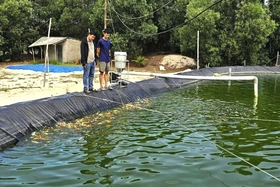e8OtMzHEkW7DoHV1JTByw5rDrMO6buG6uTB9U8O5w6DDs2kxw5p0w6wxdeG6ueG6uW11McOsw7N44bq5dcO6b+G6ucOzw7oxaMOydDFEdMOgw6wtMcOaw6AxUsO5w7LDs2kxw7rDssO5dMOsdW8xcnTDsmzhurnEkcO6ey/DrTN9e3IxxJFuw6B1dSUwcsON4bq5w6BlMH3DmsOt4bq5MVPDucOgw7NpMcOadMOsMVJ0w7J4w6zDs8SRw6zDoG4xUuG6ucOycm7hurnigJl1McSQw7Jvb8Osw7rDuuG6ueG6uTHDrcOgdTHDoHJydMOyeOG6uWUxw7rDreG6uTF1w7lkZcOseMOsdcOsw7LDszFybsOgw7PDs8Osw7NpMXJ0w7Js4bq5xJHDujFow7J0McO6w63hurkxRHTDoMOsLcOaw6AxUsO5w7LDs2kx4bq5xJHDsi3DusOyw7l0w6x1bzHDoHThurnDoDHDrMOzMcONw7nDssOzaTHDjcOyw6AxZcOsdcO6dMOsxJHDuiExxJHDsnjhurl0w6zDs2kxMzkyMcOt4bq5xJHDusOgdOG6uXUoMcOaw63DrHUxw6BycnTDsnjDoG4xdeG6uXR44bq5dTHDoHUxw6AxZMOgdcOsdTFow7J0McO6w63hurkxcnTDsnjDrMOzxJHhurkxw7rDsjHDoMO6w7p0w6DEkcO6MWTDuXXDrMOz4bq5dXXhurl1McO6w7Ixw6zDs3jhurl1w7oxw6zDszHDoMOzZTFl4bq5eOG6uW7DsnIxw7rDreG6uTHDusOyw7l0w6x1bzFyw7LDuuG6ucOzw7rDrMOgbjHDsmgxw7rDrcOsdTHDoHThurnDoCEx4bq5w7PDrcOgw7PEkcOsw7NpMcOsw7p1MXTDsm7hurkxecOsw7rDrcOsw7Mxw7rDreG6uTHDrMOzw7rhurl0xJHDssOzw7PhurnEkcO64bq5ZTHDusOyw7l0w6x1bzHDs+G6ucO6ecOydG0xw6zDszHDusOt4bq5MXnhurl1w7rhurl0w7MxcsOgdMO6McOyaDHDusOt4bq5MXJ0w7J4w6zDs8SR4bq5McOgw7NlMcOz4bq5w6xpw61kw7J0w6zDs2kxdOG6uWnDrMOyw7N1KHsvcn17cjHEkW7DoHV1JTByRMOyZeG7szB9w5Npw7nhu7PhurnDszFFw7nEkTHDmsOgw7MhMUXDrHThurnEkcO6w7J0McOyaDHDusOt4bq5McSQ4bq5w7PDuuG6uXQxaMOydDHDjMOzeOG6uXXDum/hurnDs8O6ITHDmnTDoGXhurkhMcOgw7NlMcOaw7LDuXTDrHVvMVJ0w7Jvw7LDusOsw7LDsyExdcO6w6DDuuG6uWUxw7rDrcOgw7oxw7rDreG6uTHDoHJydMOyeMOgbjHDsmgxw7rDreG6uTFEdMOgw6wtw5rDoDFSw7nDssOzaTHhurnEkcOyLcO6w7LDuXTDrHVvMXrDssOz4bq5MXJuw6DDs8Ozw6zDs2kxw6DDrG91McO6w7Ixw6DDusO6dMOgxJHDujHDrMOzeOG6uXXDum/hurnDs8O6McO6w7IxZeG6uXjhurluw7JyMcO6w63hurkxw6B04bq5w6Axw6zDs8O6w7Ixw6AxcnTDsnjDrMOzxJHDrMOgbi11xJHDoG7hurkxZeG6uXXDusOsw7PDoMO6w6zDssOzKDHDmsOt4bq5MXJ0w7Js4bq5xJHDujHEkcOyb2TDrMOz4bq5dTHhurnEkcOyLcO6w7LDuXTDrHVvITHEkcOyb2/DucOzw6zDuuG7szHDusOyw7l0w6x1byExw6DDs2Uxw6BleOG6ucOzw7rDuXThurkxw7rDssO5dMOsdW8xw7rDsjHEkXThurnDoMO64bq5McOgMcSRw7luw7rDuXTDoG4xw7rDssO5dMOsdW8xdXLDoMSR4bq5MXnDrMO6w60xw7nDs8Osc8O54bq5McOgw7NlMcOgcnLhurnDoG7DrMOzaTHDsmho4bq5dMOsw7NpdSgxw5rDrcOsdTFl4bq5eOG6uW7DsnJv4bq5w7PDujHDrHUx4bq5w71y4bq5xJHDuuG6uWUxw7rDsjFydMOyb8Oyw7rhurkxdcO5dcO6w6DDrMOzw6BkbuG6uTF1w7LEkcOsw7It4bq5xJHDssOzw7Jvw6zEkTFpdMOyecO6w60hMXJ0w7LDuuG6ucSRw7oxw7rDreG6uTHhurnDs3jDrHTDssOzb+G6ucOzw7ohMcOsb3J0w7J44bq5MXThurl1w6xl4bq5w7PDunUnMXPDucOgbsOsw7rhu7Mxw7JoMW7DrGjhurkhMcOgw7NlMeG6ucOzw63DoMOzxJHhurkxdOG6uWnDrMOyw7PDoG4xxJHDssOzw7PhurnEkcO6w6x4w6zDuuG7sygxw4BlZcOsw7rDrMOyw7PDoG5u4buzITHDrMO6McOgw6xvdTHDusOyMXJ04bq5deG6uXR44bq5ITFydMOyb8Oyw7rhurkhMcOgw7NlMWXhurl44bq5bsOycjHDusOt4bq5McOgdOG6ucOg4oCZdTHDs8Ogw7rDuXTDoG4hMeG6ucSRw7Juw7Jpw6zEkcOgbiExw6DDs2UxxJHDuW7DusO5dMOgbjF4w6Buw7nhurl1KHsvcn17cjHEkW7DoHV1JTByRMOyZeG7szB9e8Osb2kxxJFuw6B1dSUww6zEkOG6ucOzw7rhurl0MDF1dMSRJTDDrcO6w7pydSwvL8SRKGTDoMOyc8O5w6DDs2nDunTDrCh4w7MvZeG6uXVtw7rDsnIvw7Phurl5dS80NjQzLzMzNmU0M8OhNTc3N8O6Nzk4Mm41LcO6w7ktbsOsw7PDrS3DusOtw6DEkS3DusOgLXLDucOyw7MoeeG6uWRyMDHDoG7DuiUwU8O5w6DDs2kxw5p0w6wxdeG6ueG6uW11McOsw7N44bq5dcO6b+G6ucOzw7oxaMOydDFEdMOgw6wtMcOaw6AxUsO5w7LDs2kxw7rDssO5dMOsdW8xcnTDsmzhurnEkcO6MDEvfXsvcn17cjHEkW7DoHV1JTByxJDDoHLDusOsw7LDszB9w5rDssO5dMOsdcO6dTHDoMO6McOaw6AxUsO5w7LDs2kxWcOgw7rhurl0aMOgbm4oMVLDrcOyw7rDsiwxw5rDuTFOw6zDs8Otey9yfXtyMcSRbsOgdXUlMHJEw7Jl4buzMH3DmsOt4bq5MUR0w6DDrC3DmsOgMVLDucOyw7NpMeG6ucSRw7Itw7rDssO5dMOsdW8xw6B04bq5w6Axw6zDs8SRbsO5ZeG6uXUxRHTDoMOsMcSQw6B44bq5McOsw7Mxw4Axw53DssSRMXjDrG5uw6Bp4bq5ITHDjcO5w7LDs2kxTsOgcjHEkcOyb2/DucOz4bq5ITHDoMOzZTHDmsOgMVLDucOyw7NpMVnDoMO64bq5dGjDoG5uMcOsw7Mxw5p0w6DDs2kxw5rDoDFSw7nDssOzaTF4w6xubsOgaeG6uSExw43DucOyw7NpMVjDrOG6ucO6McSRw7Jvb8O5w7PhurkoMcOaw63hurkxZMOyw7nDs2XDoHTDrOG6uXUxw6B04bq5McO6w63hurkxw7PDsnTDusOt4bq5dMOzMWTDoMOzbTHDsmgxw7rDreG6uTFV4bq5MVLDoMOzaTHDjcOs4bq5w7NpMVTDrHjhurl0McOgw7NlMcOAMcOdw7LEkTF1w7p04bq5w6BvMcO6w7Ixw7rDreG6uTHDs8OydMO6w60hMcO6w63hurkxw43DsjHEkMOtw6wxT8Osw7PDrTHDjcOsacOtecOg4buzMTx54bq5dcO64bq5dMOzMWR0w6DDs8SRw60+McOgw7NlMWjDsnThurl1w7oxbsOgw7NlMcOsw7MxVcO5ZGXDrHjDrHXDrMOyw7MxODQ4McO6w7Ixw7rDreG6uTF54bq5dcO6ITHDoMOzZTFow7J04bq5dcO6MW7DoMOzZTHDrMOzMVXDuWRlw6x4w6x1w6zDssOzdTE4NcOhw4AhMTg1w6FEITHDoMOzZTE4NjIxw7rDsjHDusOt4bq5MeG6ucOgdcO6McOgw7NlMXXDssO5w7rDrSh7L3J9e3IxxJFuw6B1dSUwckTDsmXhu7MwfcOaw63hurkxcnTDsmzhurnEkcO6McOsdTFlw6x4w6xl4bq5ZTHDrMOzw7rDsjFow7LDuXQxesOyw7Phurl1LDE8w6w+MUR0w6DDrDHEkMOgeOG6uTHDusOyw7l0w6x1bzHDoHThurnDoDE8NjgoNzHDreG6ucSRw7rDoHThurl1PjHDrMOzxJFuw7ll4bq5dTFow7J04bq5dcO6McO6w7LDuXTDrHVvMXVyw6DEkeG6uXUhMWjDsnThurl1w7oxxJHDssOzdeG6uXR4w6DDusOsw7LDszHhurllw7nEkcOgw7rDrMOyw7MhMWjDoHRvMcO6w7LDuXTDrHVvITF04bq5dcOsZeG6ucOzw7rDrMOgbjHDoHThurnDoHUhMXLDoHRtw6zDs2kxbsOyw7p1ITHDoMOzZTHDuuG6ucSRw63Ds8OsxJHDoG4xw6zDs2h0w6B1w7p0w7nEkcO6w7l04bq5LjE8w6zDrD4xxJDDsm9vw7nDs8Osw7rhu7Mxw7rDssO5dMOsdW8xw6B04bq5w6AxPDXDoSg3McOt4bq5xJHDusOgdOG6uXU+MWjhurnDoMO6w7l04bq5dTFow7J04bq5dcO6McO6w7LDuXTDrHVvMXVyw6DEkeG6uXUhMWjDsnThurl1w7oxxJHDssOzdeG6uXR4w6DDusOsw7LDszHhurllw7nEkcOgw7rDrMOyw7MhMeG6uWXDucSRw6DDusOsw7LDs8OgbjHDoMOzZTHEkcO5bsO6w7l0w6BuMW7DoMOzZSExdOG6uXXDrGXhurnDs8O6w6zDoG4xw6B04bq5w6B1MXnDrMO6w60xw63Dsm/hurl1w7rDoOG7szF14bq5dHjDrMSR4bq5dS4xPMOsw6zDrD4xSMOgdG8xw7rDssO5dMOsdW8xw6B04bq5w6AxPDQ2McOt4bq5xJHDusOgdOG6uXU+McOsw7PEkW7DuWXhurl1MXXhurl0eMOsxJHhurkxw6B04bq5w6B1ITF04bq5deG6ucO6w7pu4bq5b+G6ucOzw7oxesOyw7Phurl1ITHDoMOzZTFow6B0bzHDusOyw7l0w6x1by4xPMOseD4xw5rDoDFSw7nDssOzaTFZw6DDuuG6uXRow6BubjHDusOyw7l0w6x1bzHDoHThurnDoDE8ODIxw63hurnEkcO6w6B04bq5dT4xxJHDsm9ydMOsdeG6uXUxdeG6uXR4w6zEkeG6uTHDoHThurnDoHUhMeG6uWXDucSRw6DDusOsw7LDs8OgbjFuw6DDs2UhMWjDsnThurl1w7oxxJHDoG9yw6zDs2kxdcOsw7rhurl1ITF04bq5dcOydMO6dSExdOG6uXXDrGXhurnDs8O6w6zDoG4xw6B04bq5w6B1ITHEkcOyb2/DucOzw6zDuuG7szF1csOgxJHhurl1ITFyw6B0bcOsw7NpMW7DssO6dTF5w6zDusOtMXThurl1w7oxdcO6w7JydSExw6DDs2Uxw7rhurnEkcOtw7PDrMSRw6BuMcOsw7NodMOgdcO6dMO5xJHDusO5dOG6uSh7L3J9e3IxxJFuw6B1dSUwckTDsmXhu7MwfcOaw63hurkxcm7DoMOzMeG6uW9yw63DoHXDrHrhurl1MXJ04bq5deG6uXR4w6zDs2kxw7rDreG6uTHDs8Ogw7rDuXTDoG4x4bq5xJHDsm7DsmnDrMSRw6BuMW7DoMOzZXXEkcOgcuG6uTHDrMOzMXVy4bq5xJHDrMOgbi3DuXXhurkxw6DDs2UxcnTDssO64bq5xJHDusOsw7LDszFow7J04bq5dcO6dSExw6BubsOyecOsw7NpMcOyw7Nu4buzMeG6uXV14bq5w7PDusOsw6BuMcSRw7LDs3XDunTDucSRw7rDrMOyw7N1MW7DrG3hurkxecOgbm3DrMOzaTFyw6DDusOtdTHDoMOzZTF04bq5dcO6MXXDusOycnUxw7l1w6zDs2kx4bq5xJHDsi1odMOs4bq5w7NlbuG7szFvw6DDuuG6uXTDrMOgbnUoMcOAdMSRw63DrMO64bq5xJHDusO5dMOgbjFl4bq5dcOsacOzMW/DuXXDujHDrcOgdG/DssOzw6x64bq5MXnDrMO6w60xw7rDreG6uTHDs8Ogw7rDuXTDoG4x4bq5w7N4w6x0w7LDs2/hurnDs8O6ITFydOG6uXXhurl0eMOsw7NpMcO6w63hurkxw6B04bq5w6DigJl1McO64bq5dHTDoMOsw7Mxw6DDs2UxbsOgw7NldcSRw6By4bq5MXnDrcOsbuG6uTFvw6zDs8Osb8OsesOsw7NpMeG6ucSRw7Juw7Jpw6zEkcOgbjHDrG9yw6DEkcO6KHsvcn17cjHEkW7DoHV1JTByRMOyZeG7szB9w5rDssO5dMOsdW8xdeG6uXR4w6zEkeG6uTHDoMOzZTHhurnDs8O64bq5dMO6w6DDrMOzb+G6ucOzw7oxw6B04bq5w6B1McOgdOG6uTFuw7LEkcOgw7rhurllMcOyw7nDunXDrGXhurkxw7PDoMO6w7l0w6BuMWjDsnThurl1w7oxbsOgw7NlKDHDgHTEkcOtw6zDuuG6ucSRw7rDuXTDoG4xcm7DoMOzw7PDrMOzaTHhurnDs3XDuXThurl1McOgMWTDoG7DoMOzxJHhurkxZOG6ucO6eeG6ueG6ucOzMcO6w7LDuXTDrHVvMWXhurl44bq5bsOycm/hurnDs8O6McOgw7NlMcSRw7Jvb8O5w7PDrMO64buzMXVyw6DEkeG6uXUhMXnDrMO6w60xdcO6dMO5xJHDusO5dOG6uXUxdOG6uWhu4bq5xJHDusOsw7NpMW7DssSRw6BuMcOgdMSRw63DrMO64bq5xJHDusO5dMOgbjF1w7rhu7Nu4bq5dTHDoMOzZTHDrMOzw7rhurlpdMOgw7rDrMOzaTF5w6zDusOtMWnDoHRl4bq5w7N1McOgw7NlMcOzw6DDusO5dMOgbjFuw6DDs2V1xJHDoHLhurl1KHsvcn17cjHEkW7DoHV1JTByRMOyZeG7szB9e8Osb2kxxJFuw6B1dSUww6zEkOG6ucOzw7rhurl0MDF1w7rhu7Nu4bq5JTB5w6xlw7rDrSwxMzRhMnLDvS4xw63hurnDrGnDrcO6LDHDoTgycsO9LjAxdXTEkSUwLy/EkShkw6DDsnPDucOgw7Npw7p0w6woeMOzL2Xhurl1bcO6w7JyL8Oz4bq5eXUvNDY0My8zNTdlNjMyNzYzYcO6ODXDoTZuMzItNmFlODJhM2E1YcO6Mzg5NTY0bjMoeeG6uWRyMDHDoG7DuiUwU8O5w6DDs2kxw5p0w6wxdeG6ueG6uW11McOsw7N44bq5dcO6b+G6ucOzw7oxaMOydDFEdMOgw6wtMcOaw6AxUsO5w7LDs2kxw7rDssO5dMOsdW8xcnTDsmzhurnEkcO6MDF5w6xlw7rDrSUwMzRhMjAxw63hurnDrGnDrcO6JTDDoTgyMDEvfXsvcn17cjHEkW7DoHV1JTByxJDDoHLDusOsw7LDszB9w4DDs8Oyw7rDreG6uXQxeMOs4bq5eTHDsmgxw5rDoDFSw7nDssOzaTFZw6DDuuG6uXRow6BubigxUsOtw7LDusOyLDHDjSjDk3svcn17cjHEkW7DoHV1JTByRMOyZeG7szB9w5rDreG6uTFybsOgw7PDs+G6uWUxw6B04bq5w6AhMeG6ucOzw7rDrHThurlu4buzMeG6ucOgdcO6McOyaDHDusOt4bq5McONw7IxxJDDrcOsMU/DrMOzw60xw43DrGnDrXnDoOG7szE8eeG6uXXDuuG6uXTDszFkdMOgw7PEkcOtPiExZOG6ucOz4bq5aMOsw7p1MWh0w7JvMcSRw7LDs3jhurnDs8Os4bq5w7PDujHDunTDoMOzdXLDsnTDusOgw7rDrMOyw7MhMcO5dcOsw7NpMcO6w63hurkxw63DrGnDrXnDoOG7szHDoHUxw7rDreG6uTFvw6DDrMOzMcOgw73DrHUxecOsw7rDrTF14bq5xJHDssOzZcOgdOG7szFyw6DDusOtdTFu4bq5w6Blw6zDs2kxw7rDsjFt4bq54buzMXXDrMO64bq5dTF4w6zDoDHDunTDoMOsbnUhMcSRw7LDs8SRdOG6ucO64bq5ITHDoMOzZTFlw6x0w7oxdMOyw6BldSgxw5rDreG6uTF0w7LDoGUxw7PhurnDunnDsnRtMcOsdTFl4bq5dcOsacOz4bq5ZTF5w6zDusOtMcOgMXnDrGXDusOtMcOyaDE5by0zNW8xw7rDsjFow6DEkcOsbsOsw7rDoMO64bq5MWjDucO6w7l04bq5MeG6ucO9csOgw7N1w6zDssOzKHsvcn17cjHEkW7DoHV1JTByRMOyZeG7szB9w4DEkcSRw7J0ZcOsw7NpMcO6w7Ixw5Npw7nhu7PhurnDszFFw7nEkTHDmsOgw7MhMUR0w6DDrDHEkMOgeOG6uTHDoMOzZTHDmsOgMVLDucOyw7NpMVnDoMO64bq5dGjDoG5uMcOgdOG6uTHDoG/DssOzaTFTw7nDoMOzaTHDmnTDrOKAmXUxb8OydcO6MXThurnDs8OyecOz4bq5ZTHDs8Ogw7rDuXTDoG4xw6DDusO6dMOgxJHDusOsw7LDs3UhMWjhurnDoMO6w7l0w6zDs2kxZcOseOG6uXR14bq5MeG6ucSRw7J14buzdcO64bq5b3UoMcOaw63hurkxw7nDs8Osc8O54bq5MeG6ucSRw7Juw7Jpw6zEkcOgbjFuw6DDs2V1xJHDoHLhurkxw7JoMcO6w63hurl14bq5MXXDrMO64bq5dTFydMOyb8OsdeG6uXUxw7rDsjHDoMO6w7p0w6DEkcO6MWTDssO6w60xZcOyb+G6uXXDusOsxJExw6DDs2Uxw6zDs8O64bq5dMOzw6DDusOsw7LDs8OgbjHDusOyw7l0McOycuG6uXTDoMO6w7J0dSh7L3J9e3IxxJFuw6B1dSUwckTDsmXhu7MwfcOMw7N4w6zDusOsw7NpMWTDuXXDrMOz4bq5dXXhurl1McO6w7Ixw6zDs3jhurl1w7oxw6zDszHDusOt4bq5MUR0w6DDrC3DmsOgMVLDucOyw7NpMeG6ucSRw7Itw7rDssO5dMOsdW8xw6B04bq5w6Axw6Buw6xpw7N1MXnDrMO6w60xw7rDreG6uTFl4bq5eOG6uW7DsnJv4bq5w7PDujHDsmgxw6AxbeG6ueG7szHDusOyw7l0w6x1bzF0w7LDucO64bq5MWh0w7JvMUXDssOzaTHDjcOgMcO6w7IxTcOt4bq5MVXDoMOzw60xw6DDs2Uxw43DucOyw7NpMU7DoHIoMcOaw63DrHUxdMOyw7nDuuG6uSExw63DrGnDrW7DrGnDrcO64bq5ZTHDrMOzMcO6w63hurkxUnTDsnjDrMOzxJHDrMOgbjFS4bq5w7JybuG6ueKAmXUxxJDDssO5w7PEkcOsbuKAmXUxVOG6uXXDsm7DucO6w6zDssOzMcOTw7IoMTU3LzQyMzkvw5NTLcONRcOTRTHDssOzMcO6w63hurkxb8OgdcO64bq5dDFybsOgw7MxaMOydDFTw7nDoMOzaTHDmnTDrOKAmXUxw7rDssO5dMOsdW8xZeG6uXjhurluw7Jyb+G6ucOzw7oxw7rDrXTDssO5acOtMTQyNDchMXnDrMO6w60xw6AxeMOsdcOsw7LDszHDusOyMTQyNTIhMcOsdTHEkXTDucSRw6zDoG4xaMOydDHDusOt4bq5MXJ0w7J4w6zDs8SR4bq54oCZdTHDusOyw7l0w6x1bzF1w7p0w6DDuuG6uWnhu7Moey9yfXtyMcSRbsOgdXUlMHJEw7Jl4buzMH3DgGVlw6zDusOsw7LDs8Ogbm7hu7MhMcO6w63hurkxRHTDoMOsLcOaw6AxUsO5w7LDs2kxw6B04bq5w6Axw6x1MXLDoHTDujHDsmgxw6Axw7PDoMO6w6zDssOzw6BuMcOsw7PDuuG6uXQtdOG6uWnDrMOyw7PDoG4xw7rDssO5dMOsdW8xdMOyw7nDuuG6uTHDoG7DssOzaTHDusOt4bq5McONw7IxxJDDrcOsMU/DrMOzw60xw43DrGnDrXnDoOG7szFodMOybzHDjcOgw7PDssOsMcO6w7Ixw43DsjHEkMOtw6wxT8Osw7PDrTHEkMOsw7rhu7MhMcOyaGjhurl0w6zDs2kxdcOsacOzw6xow6zEkcOgw7PDujFyw7LDuuG6ucOzw7rDrMOgbjHDusOyMWThurnEkcOyb+G6uTHDoDFydMOyb8Osw7PhurnDs8O6McO6w7LDuXTDrHVvMWXhurl1w7rDrMOzw6DDusOsw7LDszF5w6zDusOtMXJ0w7Jy4bq5dDHDrMOzeOG6uXXDum/hurnDs8O6KHsvcn17cjHEkW7DoHV1JTByRMOyZeG7szB9VOG6ucSR4bq5w7PDum7hu7MhMcOaw6AxUsO5w7LDs2kxWcOgw7rhurl0aMOgbm4xw6zDszFTw7nDoMOzaTHDmnTDrDHDrcOgdTFk4bq5xJHDsm/hurkxw6AxZOG6uW7DsnjhurllMWXhurl1w7rDrMOzw6DDusOsw7LDszFow7J0MWXDsm/hurl1w7rDrMSRMcO6w7LDuXTDrHXDunUhMcO6w63DoMOzbXUxw7rDsjHDrMO6dTFyw6zEkcO6w7l04bq5dXPDueG6uSExcnTDrHXDusOsw7PhurkhMcOgw7NlMXThurlodOG6uXXDrcOsw7NpMcOzw6DDusO5dMOgbjF1xJHhurnDs+G6uXThu7MoMcOaw63hurkxecOgw7rhurl0aMOgbm4xaG7Dsnl1MWnhurnDs8O6buG7szHhu7PhurnDoHQtdMOyw7nDs2UhMcSRw6B1xJHDoGXDrMOzaTHDsnjhurl0MXTDssSRbXUxw6zDs8O6w7Ixw6Axw7rDuXRzw7nDssOsdeG6uTFyw7LDsm4xdeG6ucO6MXnDrMO6w63DrMOzMcOgMXJ0w6xv4bq5eMOgbjFow7J04bq5dcO6ITHEkXThurnDoMO6w6zDs2kxw6AxdcSR4bq5w7Phurkxw6B1MXjDrHjDrGUxw6DDs2UxbsOseOG6uW7hu7Mxw6B1McOgMcO6dMOgZcOsw7rDrMOyw7PDoG4xw6zDs20xcsOgw6zDs8O6w6zDs2koey9yfXtyMcSRbsOgdXUlMHJEw7Jl4buzMH1Ow7LEkcOgw7rhurllMcOsw7Mxw43DucOyw7NpMVjDrOG6ucO6McSRw7Jvb8O5w7PhurkhMcONw7nDssOzaTHDjcOyw6AxZcOsdcO6dMOsxJHDuiExw6Bkw7LDucO6MTgyMW1vMWh0w7JvMUXDssOzaTHDjcOgMcSRw6zDuuG7syExw5rDoDFSw7nDssOzaTFZw6DDuuG6uXRow6BubjFvw6Dhu7MxZOG6uTFlw6x1w7rDoMOzw7oxaHTDsm8xw7rDreG6uTHEkcOsw7rhu7MxxJHhurnDs8O64bq5dCExZMO5w7oxw7rDreG6uTFsw7LDuXTDs+G6ueG7szHDusOt4bq5dOG6uTHDrHUxb+G6uXVv4bq5dMOsesOsw7NpITF5w6zDusOtMW7DuXXDrTFpdOG6ueG6ucOz4bq5dOG7szHDoMOzZTFvw6Bs4bq5dcO6w6zEkTFvw7LDucOzw7rDoMOsw7N1McSRw6Byw7rDrHjDoMO6w6zDs2kxeMOsdcOsw7rDsnR1KDHDmsOt4bq5MXTDuXXDusOsxJExdcO6w6xuw7oxw63DssO5deG6uXUxw7JoMcO6w63hurkxUsOgMcSQw7Ixw6DDs2UxWMOgw7MxTcOs4bq5w7kx4bq5w7rDrcOzw6zEkTHEkcOyb2/DucOzw6zDusOs4bq5dTFow7l0w7rDreG6uXQx4bq5w7PEkcOtw6DDs8O6McO6w7LDuXTDrHXDunUhMcOgbsOyw7NpMXnDrMO6w60xw6DDs8SRw6zhurnDs8O6McO6dOG6ueG6uXUhMXXDsm/hurkxw63DucOzZXThurlldTHDsmgx4buz4bq5w6B0dTHDsm5lMcOgw7NlMXXDsjFuw6B0aeG6uTHDusOtw6DDujF14bq5eOG6uXTDoG4xcuG6ucOycm7hurkxw6B04bq5McOz4bq54bq5ZeG6uWUxw7rDsjHhurnDs8SRw6x0xJFu4bq5McO6w63hurlvKHsvcn17cjHEkW7DoHV1JTByRMOyZeG7szB9w5rDsjF04bq5w6DEkcOtMcO6w63hurkxecOgw7rhurl0aMOgbm4hMcO6dMOgeOG6uW7hurl0dTFow7JubsOyeTHDk8Ogw7rDrMOyw7PDoG4xw43DrGnDrXnDoOG7szHDoTE8csOgdMO6McOyaDHDusOt4bq5MeG6uMOgdcO6LVnhurl1w7ox4bq4xJHDssOzw7Jvw6zEkTHEkMOydHTDrGXDsnQ+McO6w7IxTcOt4bq5MVXDoMOzw60xw7rDsnnDsyExw7rDreG6ucOzMcO6w7l0w7Mxw7LDs8O6w7Ixw7rDreG6uTHDjcOyMcSQw63DrDFPw6zDs8OtMcOadMOgw6xuMWjDsnQxw6DDs8Oyw7rDreG6uXQxNzJtbzHDusOyMcONw7nDssOzaTFYw6zhurnDujHEkcOyb2/DucOz4bq5KDFIdMOybzHDusOt4bq5dOG6uSExw6zDuuKAmXUxw6Bkw7LDucO6McOgw7PDssO6w63hurl0MTdtbzHDusOyMcOadMOgw7NpMcOaw6AxUsO5w7LDs2kxbMO5w7PEkcO6w6zDssOzITF5w63hurl04bq5MW7DssSRw6BudTHEkcOgw7MxcnTDsnjDrGXhurkxZcOsdOG6ucSRw7rDrMOyw7N1McO6w7Ixw7rDreG6uTF5w6DDuuG6uXRow6Bubih7L3J9e3IxxJFuw6B1dSUwckTDsmXhu7MwfcOaw63hurkxdcSR4bq5w7PDrMSRMcOgdOG6ucOgMcSRw7LDs3XDrHXDunUxw7JoMcO6w6104bq54bq5MW/DoMOsw7MxesOyw7Phurl1LDHDmsOgMVLDucOyw7NpMVnDoMO64bq5dGjDoG5uMTMhMVnDoMO64bq5dGjDoG5uMTQhMcOgw7NlMcO6w63hurkxw7PDoMO6w7l0w6BuMcSRw6B44bq5KDHDmsOyMXThurnDoMSRw60xw7rDreG6uXXhurkxw6B04bq5w6B1ITF4w6x1w6zDusOydHUxb8O5dcO6McO6dMOgeOG6uXR14bq5MXjDoHXDujFydMOsdcO6w6zDs+G6uTFow7J04bq5dcO6dSExecOt4bq5dOG6uTHDusOt4bq5MXXEkeG6ucOz4bq5dOG7szF04bq5w7rDoMOsw7N1McOsw7p1McO5w7PDusOyw7nEkcOt4bq5ZTFk4bq5w6DDucO64buzITF5w6zDusOtMW7DuXXDrTFpdOG6ueG6ucOzMWjDsm7DrMOgaeG6uTHDoMOzZTHDusOt4bq5McSRw63DoHTDoMSRw7rhurl0w6x1w7rDrMSRMcOtw7lvw6xlw6zDuuG7szHDsmgxw7p0w7Jyw6zEkcOgbjFow7J04bq5dcO6dSgxw5rDreG6uTF0w7l1w7pu4bq5McOyaDHDusOt4bq5MXnDrMOzZTHDrHUxw6DEkcSRw7JvcsOgw7PDrOG6uWUxZOG7szHDoDHEkcOtw7J0w7l1McOyaDFkw6x0ZXXDssOzaXUhMXnDrcOsbuG6uTHDrMOzMcO6w63hurkxZcOsdcO6w6DDs8SR4bq5ITHDusOt4bq5McO6w63DucOzZeG6uXTDrMOzaTF1w7LDucOzZTHDsmgxxJHDoHXEkcOgZcOsw7NpMXnDoMO64bq5dGjDoG5udTHEkcOgw7MxZOG6uTHDreG6ucOgdGUoMcOaw7Jp4bq5w7rDreG6uXQhMcO6w63hurnhu7MxxJF04bq5w6DDuuG6uTHDoDFvw6Bs4bq5dcO6w6zEkTHDoMOzZTFyw7LhurnDusOsxJExw7PDoMO6w7l0w6BuMW7DoMOzZXXEkcOgcuG6uSh7L3J9e3IxxJFuw6B1dSUwckTDsmXhu7MwfcOaw6AxUsO5w7LDs2kxWcOgw7rhurl0aMOgbm4xMzHDrHUxw6Axw7PDoMO6w7l0w6BuMcSRw6B1xJHDoGXhurkxcm7DucOzacOsw7NpMTQyMW/hurnDuuG6uXR1MWXDsnnDszHDssOzw7rDsjHDusOt4bq5MXTDssSRbeG7szF1bsOycuG6uXUxw7JoMcO6w63hurkxb8Oyw7nDs8O6w6DDrMOzITF1bsOsZcOsw7NpMcOyeOG6uXQxcnThurnEkcOgdMOsw7LDuXUxxJFuw6xoaHUoMcSQw7LDs3Xhurlzw7nhurnDs8O6buG7syExw7rDreG6uTHDunTDoMOsbjHDusOyMcO6w63hurkxaMOsdHXDujF5w6DDuuG6uXRow6BubjHDrHUxw6BudcOyMcOgw7rDunTDoMSRw7rDrHjhurkxw7rDsjHDoGV44bq5w7PDusO5dOG6uTHhurnDs8O6w63DuXXDrMOgdcO6dTHDsnQxw7PDoMO6w7l04bq5LW7DsnjDrMOzaTHDusOyw7l0w6x1w7p1KHsvcn17cjHEkW7DoHV1JTByRMOyZeG7szB9w5rDreG6uTHDoHThurnDoDHDoMO6McO6w63hurkxaMOyw7LDujHDsmgxw7rDreG6uTF5w6DDuuG6uXRow6BubjFo4bq5w6DDusO5dOG6uXUxb8Ogw7Phu7MxbsOgdGnhurkxdMOyxJFtMWjDsnRvw6DDusOsw7LDs3UxecOsw7rDrTFlw6x44bq5dHXhurkxdcOtw6By4bq5dSExcnTDsnjDrGXDrMOzaTHDrGXhurnDoG4xdXLDssO6dTFow7J0MXThurl1w7rDrMOzaTHDoMOzZTHDsnRpw6DDs8OsesOsw7NpMcOyw7nDumXDssOydDFyw6zEkcOzw6zEkXUoMcOAbsO6w63DssO5acOtMcO6w63hurkxecOgw7rhurl0MWTDsmXhu7Mxw6DDujHDmsOgMVLDucOyw7NpMTMxw6x1McOzw7LDujF44bq5dOG7szF5w6xl4bq5ITHDrMO6McSRw7LDs8O6w6DDrMOzdTHDs8O5b+G6uXTDssO5dTF1b8Ogbm4xcsOyw7NldTHDsmgxeMOgdOG7s8Osw7NpMXXDrHrhurl1KDHDmsOt4bq5MXTDssSRbXUhMXTDoMOzacOsw7NpMWh0w7JvMXTDuWlp4bq5ZTHDusOyMWhuw6DDujF1w7l0aMOgxJHhurl1ITHDoHThurkxw6zDs8O64bq5dHVy4bq5dHXhurllMcOgb8Oyw7NpMcO6w63hurkxecOgw7rhurl0MWTDsmXDrOG6uXUhMWhuw6DDs23DrMOzaTFkw7LDusOtMXXDrGXhurl1McOyaDHDusOt4bq5MXnDoMO64bq5dGjDoG5uKDFYw6x1w6zDusOydHUxxJHDoMOzMXXDrMO6McOgw7rDsnIxw7rDreG6uTFuw6B0aeG6uTF0w7LEkW0xaMOydG/DoMO6w6zDssOzdTHDusOyMcOgZW/DrHThurkxw7rDreG6uTHhurnDs8O6w6x04bq5MXXEkeG6ucOz4bq5McOgdTHDusOt4bq5MXnDoMO64bq5dGjDoG5uMcSRw6B1xJHDoGXhurl1MWh0w7JvMcOgZMOyeOG6uSExxJF04bq5w6DDusOsw7NpMcOgMXLDrMSRw7rDuXThurl1c8O54bq5MXXDrGnDrcO6MXnDrMO6w60xw6zDunUxaHTDssO6w63hu7MxecOtw6zDuuG6uTF1cnTDoOG7sygxw4zDszHDusOt4bq5MXThurlodOG6uXXDrcOsw7NpMcSRw7LDsm7Ds+G6uXV1McOyaDHDusOt4bq5MXVvw6BubjFyw7LDs2V1ITF4w6x1w6zDusOydHUxxJHDoMOzMcOsw7Nlw7luaeG6uTHDrMOzMXV5w6xvb8Osw7NpMcOydDHDrG9v4bq5dHXhurkxw7rDreG6uW914bq5bnjhurl1McO6w7IxxJHDssOybjHDsmhoKHsvcn17cjHEkW7DoHV1JTByRMOyZeG7szB9w4Bkw7LDucO6McOgMTQyLW/DrMOzw7nDuuG6uTF5w6BubTFodMOybzFZw6DDuuG6uXRow6BubjEzMcOsdTFZw6DDuuG6uXRow6BubjE0ITHDoDFyw7Jyw7luw6B0MXVyw7LDujFow7J0MXV5w6xvb8Osw7NpMcOgb8Oyw7NpMW/DoMOz4buzMcO6w7LDuXTDrHXDunUoMcOaw63hurkxecOgw7rhurl0MWTDsmXhu7Mxw63hurl04bq5MXVyw6DDs3Uxw6BycnTDssO9w6xvw6DDuuG6uW7hu7MxNyEyMjIxdXPDucOgdOG6uTFv4bq5w7rhurl0dSExecOsw7rDrTHDoDFvw6DDvcOsb8O5bzFl4bq5csO6w60xw7JoMcOgZMOyw7nDujEzMjFv4bq5w7rhurl0dSgxROG6uXXDrGXhurl1MXV5w6xvb8Osw7NpITF4w6x1w6zDusOydHUxxJHDoMOzMcOgbnXDsjHhurnDs2zDsuG7szF4w6B0w6zDssO5dTHDoMSRw7rDrHjDrMO6w6zhurl1MXXDucSRw60xw6B1MWTDssOgw7rDrMOzaSExbcOg4buzw6Btw6zDs2khMcOydDF1w6xvcm7hu7Mxw6BycnThurnEkcOsw6DDusOsw7NpMcO6w63hurkxdcSR4bq5w7Phurl04buzMcOgdMOyw7nDs2Uxw7rDreG6uTFuw6Bt4bq5KHsvcn17cjHEkW7DoHV1JTByRMOyZeG7szB9SHTDsm8xw5rDoDFSw7nDssOzaTF4w6xubsOgaeG6uSExeMOsdcOsw7rDsnR1McOtw6B44bq5McO6w7IxxJFuw6xvZDHDsnjhurl0MW/DssO5w7PDusOgw6zDszFyw6B1deG6uXUxw6DDs2Uxw7p04bq5bTHDusOtdMOyw7lpw60xdcO6dOG6ucOgb3UxaMOydDHDoGTDssO5w7oxNDIxb8Osw7PDucO64bq5dTHDusOtdMOyw7lpw60xw7rDreG6uTFow7J04bq5dcO6McO6dMOgw6xuMcO6w7IxdOG6ucOgxJHDrTHDmsOgMVLDucOyw7NpMcSRw6B44bq5KDHDmsOt4bq5McSRw6B44bq5McOsdTHDoGTDssO5w7oxMzIxb+G6ucO64bq5dHUxw63DrGnDrTHDoMOzZTHhurnDvcO64bq5w7NldTHDoGTDssO5w7oxNDIyMW/hurnDuuG6uXR1MWXhurnhurlyMcOsw7PDusOyMcO6w63hurkxb8Oyw7nDs8O6w6DDrMOzITF5w6zDusOtMcOsw7p1McOsw7PDuuG6uXTDrMOydDFk4bq5w6zDs2kxc8O5w6zDuuG6uTFlw6B0bTHDoMOzZTFlw6Bvcigxw5rDreG6uTHEkcOgeOG6uTHDrHUxZcOseMOsZeG6uWUxw6zDs8O6w7Ixw7p5w7IxcsOgdMO6dSwxw7rDreG6uTF1w7p04bq5w6BvMcOgw7NlMcO6w63hurkxdcOgw7Nl4buzMWThurnDoMSRw60oMcOaw63hurkxxJHDoHjhurkxw6xvcnThurl1deG6uXUxeMOsdcOsw7rDsnR1MXnDrMO6w60xw6zDunUxdeG7s3XDuuG6uW8xw7JoMXXDusOgbsOgxJHDusOsw7rhurl1McOgw7NlMXXDusOgbsOgaW/DrMO64bq5dSExdOG6uXXhurlvZG7DrMOzaTHDoDF0w6Blw6zDoMOzw7oxxJHhurnDrG7DrMOzaTFuw6Bvcih7L3J9e3IxxJFuw6B1dSUwckTDsmXhu7MwfcOAZWXDrMO6w6zDssOzw6BubuG7syExw6Byw6B0w7oxaHTDsm8xw5rDoDFSw7nDssOzaTHEkMOgeOG6uTHDoMOzZTHDusOt4bq5MXnDoMO64bq5dGjDoG5udSExw7rDrcOsdTHDoHThurnDoDHDoG51w7IxZMOyw6B1w7p1MW/DoMOz4buzMcOyw7rDreG6uXQxZOG6ucOgw7nDusOsaMO5bjHDoMOzZTFydMOsdcO6w6zDs+G6uTFl4bq5dcO6w6zDs8Ogw7rDrMOyw7N1McOgecOgw6zDusOsw7NpMeG6ucO9cm7DsnTDoMO6w6zDssOzITF1w7nEkcOtMcOgdTFVw6AxT8O5MVLDoHV1ITFEdMOgw6wxxJDDoHjhurkhMU7DoMOyMUTDoMOyMVJ0w6x1w7LDsyExw6DDs2Uxw5rDoDHEkMOyw7Mxw4DDrHRyw7J0w7ohMcOgb8Oyw7NpMcOyw7rDreG6uXR1KDHEkMO5dHThurnDs8O6buG7syExU8O5w6DDs2kxw5p0w6wxcnTDsnjDrMOzxJHhurkhMcOgbsOyw7NpMXnDrMO6w60xw5LDvcOgbsOsdTHEkMOyb3LDoMOz4buzITHDrcOgdTFl4bq5eOG6uW7DsnLhurllMcOsw7N44bq5dcO6b+G6ucOzw7oxcm7DoMOzdTFow7J0McO6w63hurkxw5rDoDFSw7nDssOzaTHDusOyw7l0w6x1w7oxw6B04bq5w6AhMcOyaGjhurl0w6zDs2kxeMOgdMOsw7LDuXUx4bq5w7PDusOsxJHDrMOzaTHDoMSRw7rDrHjDrMO6w6zhurl1McOsw7PEkW7DuWXDrMOzaTF1w6xpw63DunXhurnhurnDrMOzaSExecOgw7rhurl0aMOgbm4xZMOgw7rDrcOsw7NpITHDrcOsacOtLcOgbsO6w6zDusO5ZeG6uTHDunThurltbcOsw7NpITFlw6zDs8Osw7NpITHDoMOzZTHDoMSRxJHDsm9vw7Jlw6DDusOsw7LDsyh7L3J9e3IxxJFuw6B1dSUwcsOAw7nDusOtw7J0MH3DmsO5MU7DrMOzw60xLTHDk2nDssSRMU/DoMOsey9yfQ==
Tu Linh - Ngoc Mai

{head}
Other news

QTO - In Quang Tri, clean agricultural stores may not flaunt flashy signs or wide storefronts, but they are quietly becoming trusted places where consumers...

QTO - In a quiet village in central Vietnam, Le Minh Duc, 26, has turned his passion for ornamental fish into a promising startup, the first Koi breeding...

